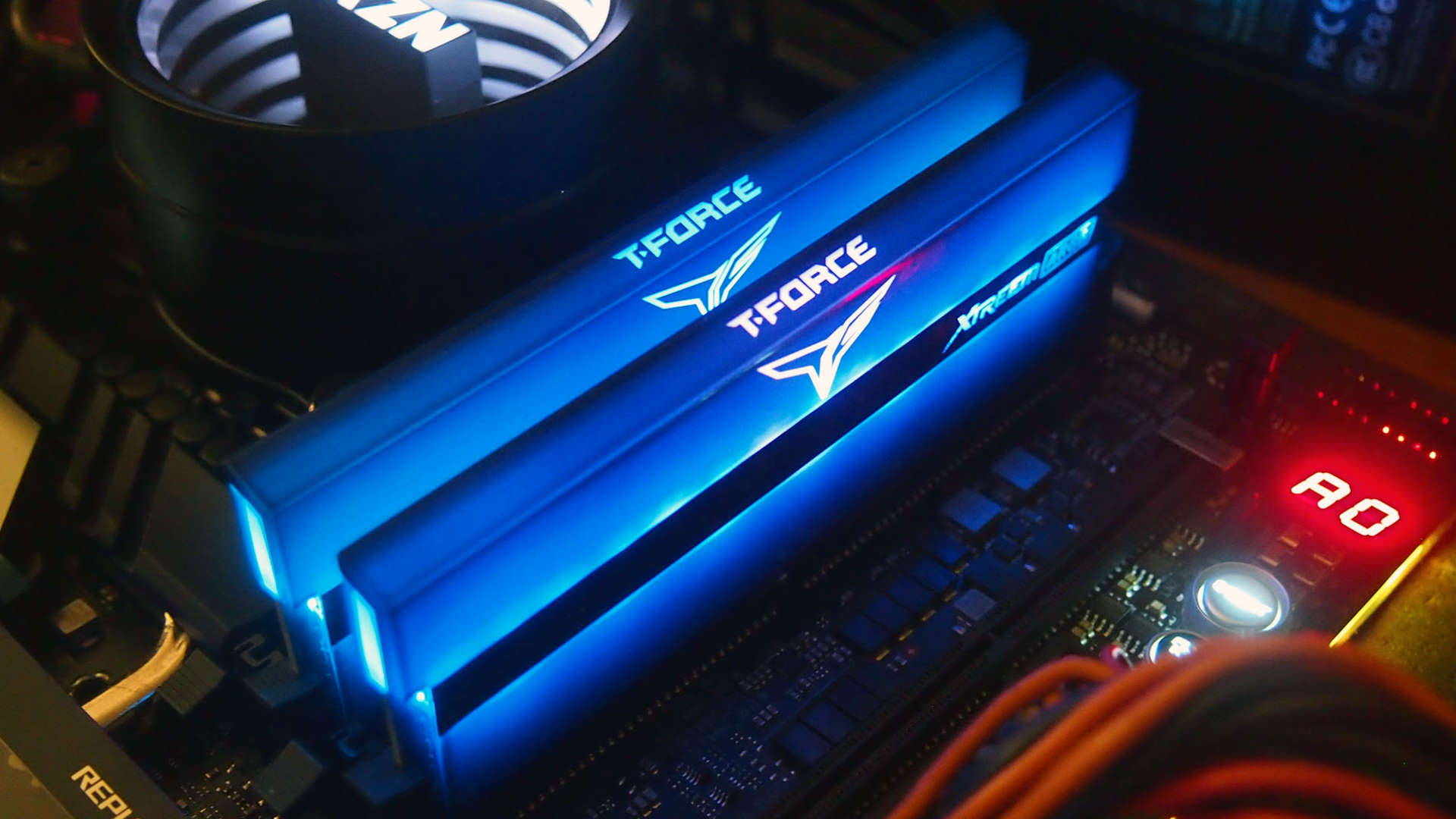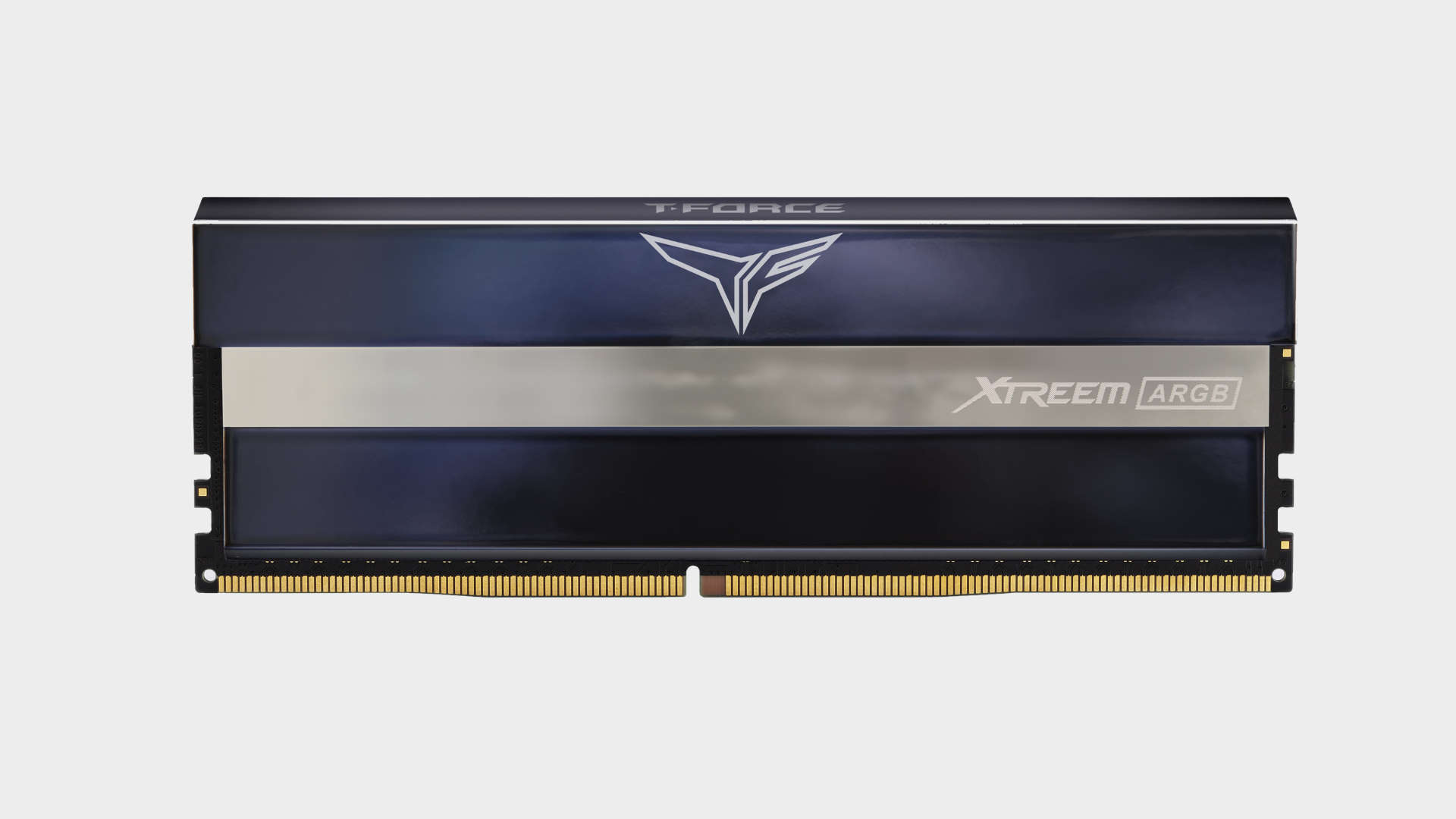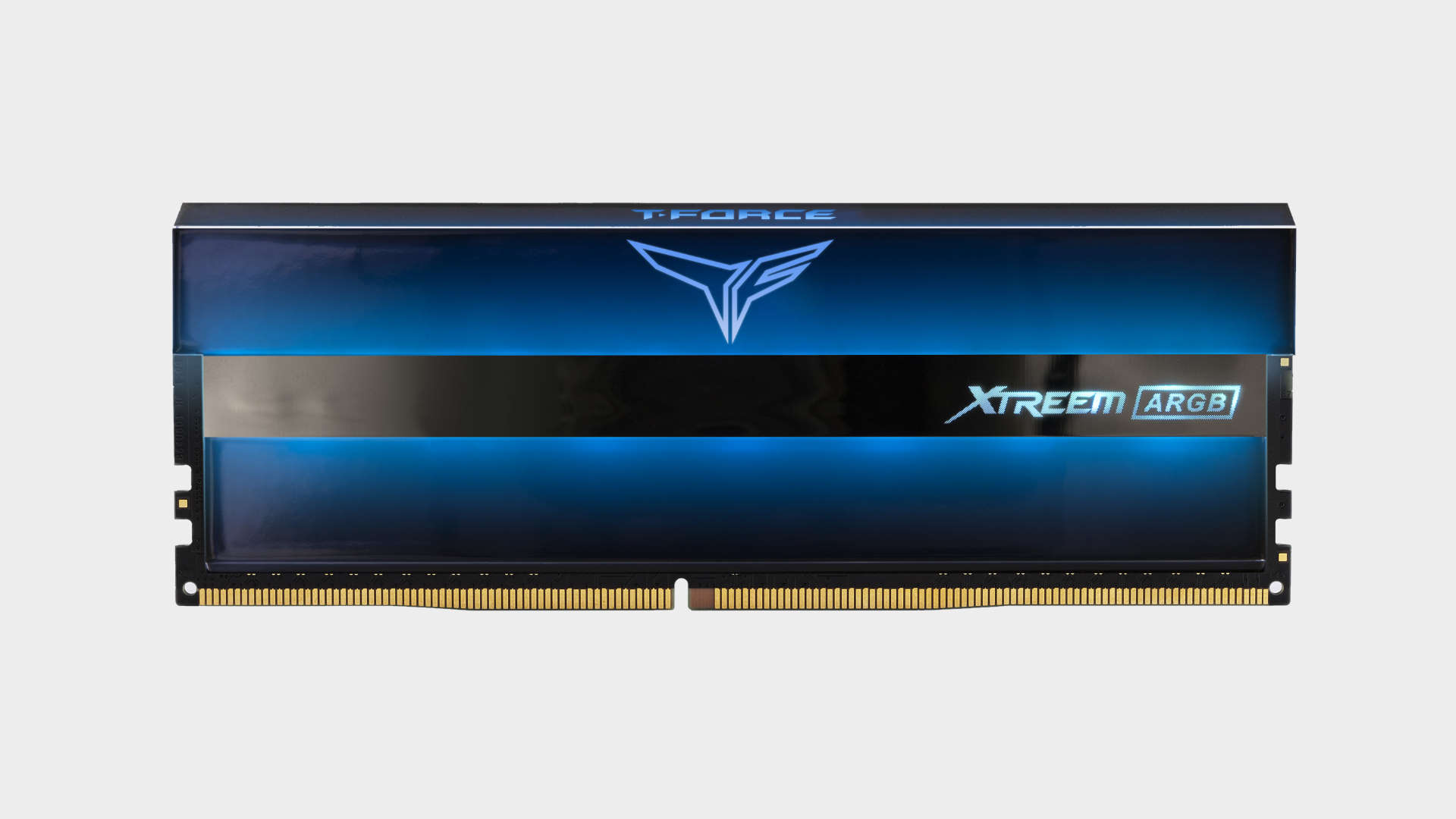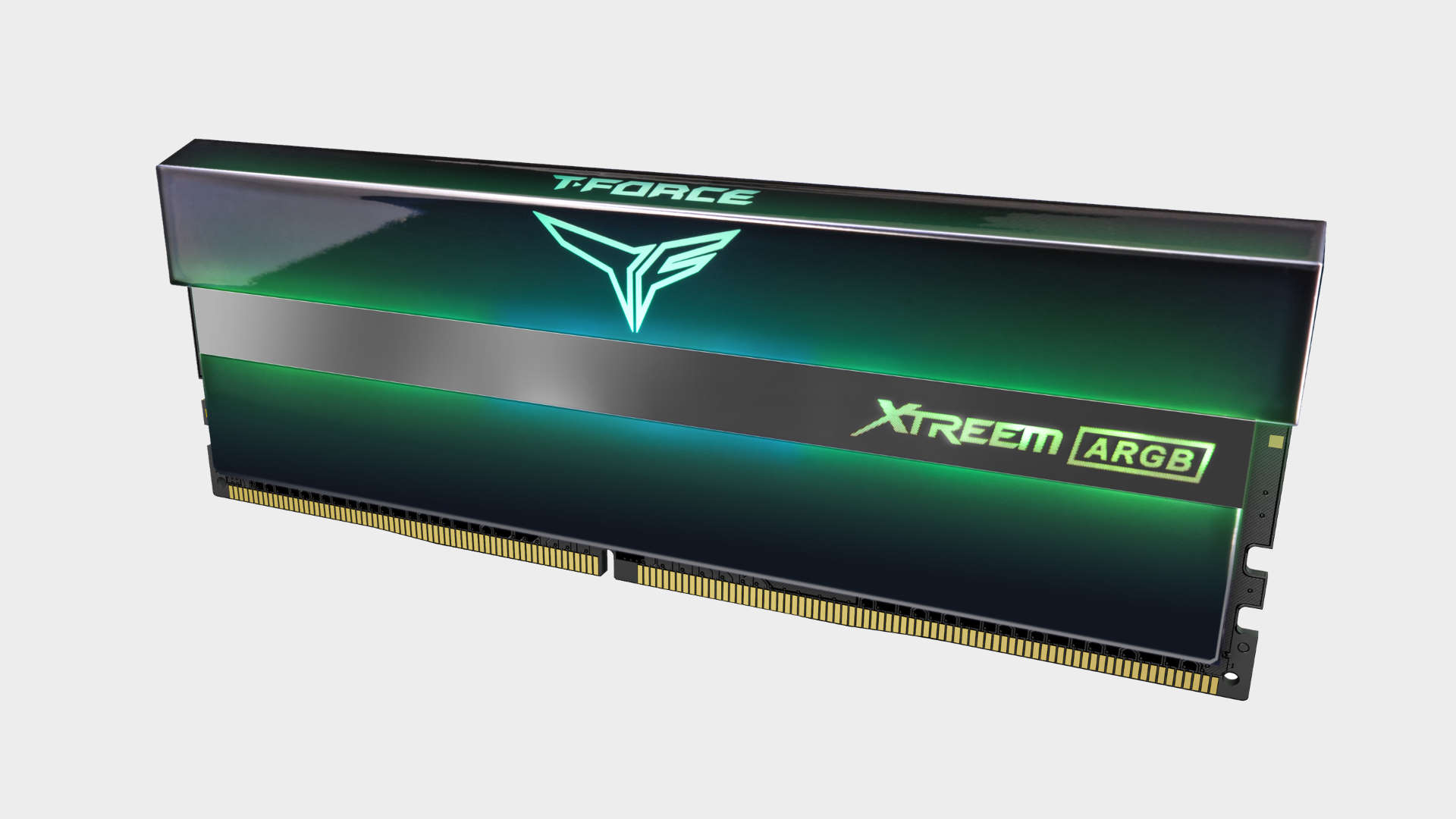Our Verdict
If you’re hunting for a high performance set-and-forget kit to match with an AMD Ryzen 3000 system, there are none better.
For
- Perfect for AMD Ryzen 3000 systems
- Subtle RGB design (if there is such a thing)
- Great price/performance
Against
- Nothing at this price
PC Gamer's got your back
The Team Xtreem ARGB RAM kit we’re got here for review isn’t your standard DDR4 RAM, it’s one of very few 3,600MHz kits that comes with a CAS latency of just 14. With primary timings of 14-15-15-35, it’s very much an elite kit. In fact, if you’re into overclocking your rig, this is a kit that may have as much headroom as any memory modules on the market. It does have a default voltage of 1.45v, which is on the high side for a DDR4 kit, but remember we’re dealing with a low latency CAS 14 kit. Besides, there’s a lifetime warranty anyway.
Model - TF10D416G3600HC14CDC01
Memory type - DDR4
Capacity - 16GB (8GB x2)
Rated speed - 3,600MHz
Rated latency - 14-15-15-35
Voltage - 1.45v
Price - $160
DDR4 memory really is maturing nicely. Just a couple of years ago, a decent DDR4-3200 kit was regarded as high end, but as we move towards 2021 3,200MHz is now the baseline for a decent gaming system. Actually you could argue that 3,600MHz is the current sweet spot for decent performance without any significant price premium.
This particular Team Xtreem ARGB memory is—as the name suggests—an addressable RGB kit. Even if over-the-top, eyeball-frying laser light shows aren’t your thing, this is still a kit worth checking out. Each DIMM has a covering that diffuses the lighting across most of the module and the result is a subtle and understated look. Team doesn’t have its own RGB control app, but the kit can be controlled simply using various motherboard manufacturers’ software suites.
This way you can synchronise the colors of your system nicely. Even though RGB is seemingly all pervasive in modern gaming systems, this kit actually still looks really good without it. The modules have a dark blue covering that looks great by itself, without compromising on the RGB vibrancy.
So, how does it perform? As is always the case with high performance memory, the benefits are application specific.
When compared to a common DDR4-3200 kit you do get the odd bump, though any benefit is hidden when you move to higher resolutions and graphical details. You will see the benefits if you want to extract every last frame with a high refresh rate monitor.
High performance memory is really only desirable when paired with a similarly high spec system. That’s not to say a kit like this is a waste of money. If you’re going to drop $1000+ on a graphics card, why not splash an extra $50 or so on some quality RAM to minimise any potential bottlenecks? We think it’s a no-brainer, especially as this kit will set you back a modest $160.

The DDR4-3600 speed rating makes it a perfect kit for an AMD Ryzen 3000 system too. The AMD Zen 2 processors are capable overclockers, but the memory clock itself is linked to the Infinity Fabric clock, which is generally limited to 1,800 MHz or a bit higher. In a 1:1 ratio, this puts DDR4-3600 right in the sweet spot for memory speed.
Moving beyond this speed incurs a latency penalty that requires very high speeds to overcome. With that in mind, a kit like the Team Xtreem ARGB, with its low latency rating, is exactly what the doctor ordered. If you want a plug and play high performance memory kit to pair with your shiny new AMD system, this is as good as it gets. There are kits with a similar spec, but there are none better.
A kit with a base spec like this screams “overclock me!” It’s built with the highly regarded Samsung B-Die IC, but even so, not every memory chip can run at 3600 C14 reliably and that means this is a highly binned kit. In fact some of the popular DDR4-4000 and higher kits can struggle at 3600 C14. We were able to achieve DDR4-4400 quite easily, but 4600 proved to be a struggle compared to a recent test of G.Skill’s high performance kit. We feel that 4600 MHz is at the limit of our ASRock Z490 motherboard though. As always, your OC mileage may vary.
We’re currently working on a deep dive into how high speed RAM and timings affect game performance with a larger number of games. We’ll include a look at both Intel and AMD performance. Will we see some surprises? Keep an eye out for that.



This Team Xtreem ARGB kit with its DDR4-3600 speed and 14-15-15 timings offers a great blend of decent speed and low latency, but without the steep price often associated with top tier memory kits. Throw in the modules' appealing visual design and Team has a winner of a kit that deserves your consideration, particularly for AMD users where its set-and-forget XMP profile is a perfect match for the memory characteristics of Ryzen 3000 series processors.
We might have expected a little more in terms of overclocking performance out of the product, but that’s not really a major concern for many gamers who will just run it at its rated speed. Perhaps we were spoiled by our recent testing of G.Skill’s Trident X Royal DDR4-4000 C15 kit. Bear in mind though that kit costs a good deal more.
Getting back to the Team kit, you’ll know if this kit appeals to you after just one look at its design and specifications. Great looks, a hassle free XMP speed rating, low latency and an affordable price means all the important boxes are ticked. Seriously, what’s not to like?
If you’re hunting for a high performance set-and-forget kit to match with an AMD Ryzen 3000 system, there are none better.

Chris' gaming experiences go back to the mid-nineties when he conned his parents into buying an 'educational PC' that was conveniently overpowered to play Doom and Tie Fighter. He developed a love of extreme overclocking that destroyed his savings despite the cheaper hardware on offer via his job at a PC store. To afford more LN2 he began moonlighting as a reviewer for VR-Zone before jumping the fence to work for MSI Australia. Since then, he's gone back to journalism, enthusiastically reviewing the latest and greatest components for PC & Tech Authority, PC Powerplay and currently Australian Personal Computer magazine and PC Gamer. Chris still puts far too many hours into Borderlands 3, always striving to become a more efficient killer.

